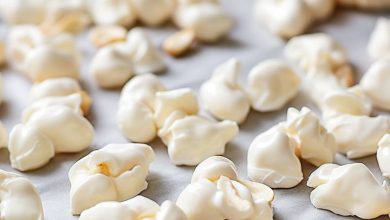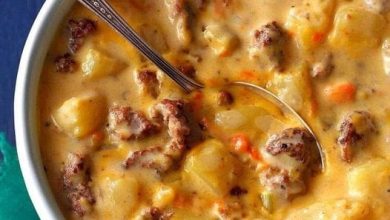Well, That’s a First!

Family dinners are a wonderful opportunity for connection and sharing, but they can sometimes bring unexpected culinary surprises. What seems like a straightforward home-cooked meal can occasionally lead to a moment of silent contemplation, especially when different cooking preferences come into play.
ADVERTISEMENT
The Unpeeled and Undeveined Shrimp Dilemma
Imagine sitting down to a delicious-looking shrimp dish prepared with love by your mother-in-law. Everything seems perfect until you notice something specific about the shrimp: they haven’t been peeled or deveined. This detail, while seemingly small to some, can be quite significant for others.
ADVERTISEMENT
The “dark vein” that runs along a shrimp’s back is actually its digestive tract. For many, the idea of consuming this can be unappetizing due to concerns about cleanliness and presentation. While it’s generally understood that eating undeveined shrimp isn’t harmful to your health, the potential presence of sand or grit within that vein can definitely affect the texture and taste of the dish. This can be particularly noticeable and off-putting for children, who might be more sensitive to unusual textures. In such a situation, choosing to politely decline the dish for yourself and your children can feel like a necessary decision, even if it leads to a bit of awkwardness at the table.
ADVERTISEMENT
Cultural Norm or Culinary Oversight?
This scenario naturally leads to a fascinating question: Is the omission of the deveining step a simple cultural difference in cooking practices, or is it a culinary oversight that could easily be addressed? Deveining shrimp, though technically not mandatory for safety, is a practice that many embrace for both hygiene and aesthetics. It’s about ensuring the most pleasant eating experience possible.
Indeed, there’s no single, universal rule when it comes to preparing shrimp across the globe. Some culinary traditions fully embrace the entire shrimp, shells and all, celebrating the intense flavor and texture that comes with it. Other cuisines, however, consider deveining an absolutely essential step for a refined dish.
For those who do choose to devein, it’s a relatively simple process that can make a considerable difference in the final result. It usually involves making a shallow cut along the shrimp’s back, gently removing the vein, and then giving the shrimp a quick rinse. This simple preparation ensures a much cleaner and often more appealing dish, free from any unwanted grit.
Navigating Family Dinner Conversations with Diplomacy
Discussions around food, especially when you’re dining with family, often require a delicate touch and a good measure of diplomacy. It’s about finding a balance between respecting cherished traditional cooking methods and gently expressing your personal preferences or concerns. The goal is always to maintain harmony at the dinner table.
Ultimately, whether someone chooses to devein shrimp or not is a personal or cultural choice. What truly matters is the overarching purpose of family meals: to share food and love in a way that brings everyone together and leaves them feeling satisfied and cherished.
What are your thoughts on deveining shrimp – do you consider it an essential step, or does it depend on the dish?




